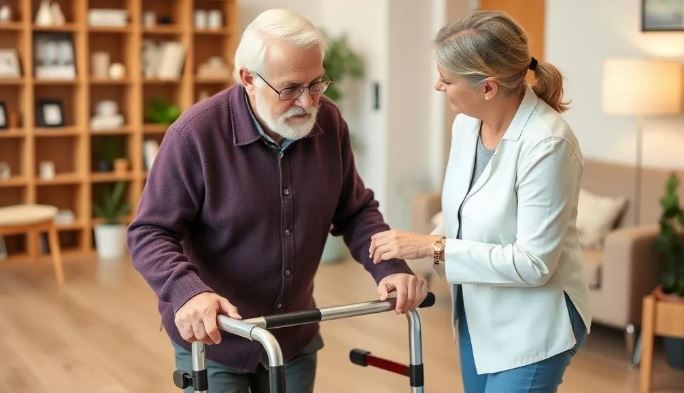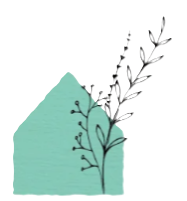Fall risk increases with age. Seniors are at higher risk of falling due to a combination of various factors, including age-related physical and cognitive changes, chronic health conditions, and environmental factors. Even in healthy aging, when no major chronic conditions are present, balance and mobility tend to decline due to natural changes in the body, such as reduced muscle strength, agility, flexibility, and sensory function.
But seniors are more likely to have chronic health conditions such as arthritis, diabetes, or heart disease, which can affect their physical function and increase their risk of falling. Visual and hearing impairments can affect seniors’ ability to perceive their surroundings and react to potential hazards. Many seniors take medications that can cause dizziness, drowsiness and other side effects that increase the risk of falling. Additionally, seniors who have fallen previously may become more fearful of falling, which can lead to a decrease in physical activity and muscle weakness, further increasing their risk of falling.
According to the Centers for Disease Control and Prevention (CDC), an average of 4.8 million adults 65 and older receive emergency care for fall-related injuries annually.
Nearly 30,000 older adults die each year as result of a fall, and women are nearly twice as likely as men to suffer injuries from falls. Among fall-related injuries seen in emergency departments, fractures were most common, followed by internal organ injuries (including concussions), contusions, lacerations, and sprains.
Care professionals in assisted living facilities are extremely concerned with the safety of their residents who are at higher fall risk. Keep in mind that, differently from hospitals, residential care communities are prohibited from restraining their residents’ mobility in any way, shape, or form, even if it is with the intent to keep them safe: no ties or restrains, no sit belts, no chemical restraining medications, no nudging them into corners or seats from where they cannot get up. The real challenge is allowing for freedom of movement while mitigating the inherent fall risk. For that, facilities use several strategies tailored to each resident’s individual care needs.
Some of these strategies can be also utilized by caregivers caring for their loved ones at home, in their efforts to avoid a catastrophic fall that would precipitate the very need for moving into an assisted living community.
Here are some of the best practices in fall prevention that you can expect once moving into an assisted living community:

- Ambulation-Encouraging Environment
Fall prevention starts with the environment, or the home itself. A safe home offers wide spaces where residents can ambulate on even floors that are free of tripping hazards, such as throw-rugs, electric wires, and clutter. There should be plenty of natural light and proper illumination at night, with special attention to pathways, restrooms, and bedside areas. Bathrooms, showers, and hallways should be equipped with functional grab bars and handrails, and there should be plenty of sitting areas available providing opportunities for walkers to sit and rest along their way. There should be no steps or obstacles in getting in or out of showers, and anti-slipping treatment should be applied to surrounding floors.Furniture should be functional, placed in ways not to obstruct passage, and selected thoughtfully, with no sharp or pointed edges, and no glass tops–no surfaces that could cause additional harm should a fall occur near it. Chairs should have sturdy armrests that can also support residents as they stand up from them.
Doors should be wide and easy to open, in consideration of older adults’ frailty and commonly debilitating conditions such as rheumatism and arthritis. If doors are equipped with self-closing mechanisms (spring or pneumatic), those should be calibrated to close gently without the risk of pushing a slow-moving resident out of its way, or clamping them as they close.
A well-designed assisted living environment encourages residents’ ambulation needs and is equipped to continue supporting them as their care needs change over time. - Fall Risk Assessment
Every resident should be initially assessed for fall risk (among other health care needs). The assessment is based on the information provided by the resident’s doctor in the physician’s report (form 602a, which is required for assisted living placement in California) and includes cognitive levels, mobility, and a review of their medications to verify that they are not taking any medications that can increase the risk of falling. The result of this assessment will inform the care plan which the staff will use for guidance in daily care. Care plans are created by the facility care staff and updated on a yearly basis and/or when there is a change in the resident’s condition. Care plans must be discussed with and approved by the residents or their representatives. - Physical Therapy
New residents can receive physical therapy to help them acclimate with their new surroundings and learn how to safely navigate around the new home. A physical therapist can also advise about the appropriateness of a mobility assistive device (i.e., walking stick, cane, walker, or wheelchair), make recommendations for models, their proper size and fitting, and help residents learn and practice how to use the device. These services are usually available not from the residence but from a Home Health organization provider, which can send therapists to the home in coordination with the home’s own care staff. Physical therapy for new residents is usually covered by Medicare. - Pagers
Most care homes provide their residents with some form of a pager system that allows them to call for assistance when needed. Pagers come in different formats, some are fixed to strategic locations in the home (such as by the bed or the toilet), others can be worn as a bracelet or necklace. Pagers are helpful but should not be relied upon by themselves, but used in combination with regular visual check-ins from the staff: there are many possible situations where the resident may be in distress but unable to press or call for help. - Regular Check-ins
Assisted living residents should receive personal check-ins from care staff at regular intervals, at all times of day and night. Most homes perform visual/in-person check-ins every two hours, where staff can verify that residents are comfortable, safe, clean, and have their needs met. Frequency of the check-ins can be increased during times when the resident is experiencing a health condition, such as flu or covid, or when the resident’s care plan requires it. Check-ins can also be helpful to residents who are new in the use of walking assistive devices and need reminders to use them consistently, even after having completed physical therapy.Some residents may initially resent these check-ins as a perceived intrusion to their privacy, but such resentment tends to diminish over time as residents develop trust in the care staff. Moving into assisted living is a big lifestyle change requiring some time to adjust to, especially for those who have moved directly from their own homes. Most residents, however, feel comforted and reassured knowing that help is never too far away, as they end up developing a friendly relationship with the care staff. They become part of a new community. - Fall Mats
These cushioned mats can be placed alongside the bed with the purpose of providing a soft landing should the resident fall or slip down from the bed. In case of a fall, a well-placed mat could be the difference between a few scratches and, in a worst-case scenario, a few broken bones. - Postural Support Devices
Postural support devices such as braces and spring release trays can be used to achieve proper posture and balance, to improve a resident’s mobility and independent functioning, or to position rather than restrict movement. Something as simple as a pillow, when properly positioned, can help residents prevent slouching and sliding down from their seated position onto the floor. While caregivers can use a variety of regular pillows for this task, some cushions are specially designed for it, such as a wheelchair wedge pommel cushion. Cushions also have the added function of preventing pressure sores for residents who are more sedentary. Any device used for postural support must be placed in a manner that permits quick release by the resident, and under no circumstances include tying, depriving, or limiting the use of a resident’s hands or feet. - Half-Bed Rails
The use of full-size bed rails in assisted living is prohibited in California (because it is considered movement-restrictive, and potentially hazardous), except for residents on hospice care. Half-size rails are allowed when ordered by the resident’s physician. These rails are mostly useful in providing a firm grip bar and stable support for residents, as they try to get up from the bed. Such support may be necessary and sufficient to prevent a fall or slippage from the bed in the middle of the night. - Bed/Chair Alarms
Quite possibly the residents’ least favorite fall prevention tool, bed alarms are generally allowed in assisted living facilities, although their use is regulated. It must be part of a comprehensive, person-centered care plan, and should not be used in a way that restricts a resident’s freedom or dignity. Repeated or unnecessary use can lead to them being classified as a restraint–which is, again, prohibited.A bed alarm can alert staff when a resident attempts to get out of bed and is at risk of falling, allowing for immediate assistance. It can be very effective, provided that there is a caregiver in the approximate area who is not asleep themselves. There are all kinds of bed alarms, some can be installed on the bed itself, some on the pad by the bed, some can be pinned on to the resident’s pajamas. Amazon carries an enormous variety of models, providing many options also for family caregivers who would benefit from their use when caring for their loved ones in their own home. - One-to-One Private Duty Care
If a resident is experiencing a heightened need for fall prevention, which is common when recovering from a health event or hospitalization, it might be necessary to have a caregiver exclusively assigned to assist them, starting from a few hours per day up to a 24/7 basis. Assisted living facilities do not provide one-to-one care; most care homes in this category offer staff ratios varying between 12 and 6 residents per caregiver, declining on the night shift. If an assisted living resident needs increased supervision for fall risk, an additional private caregiver can be contracted for the task, and the resident is responsible for the hiring and costs–which can be extremely high as the number of required hours nears 24/7. There are home care companies that can provide such additional care, and the facility staff can make referrals.
Note that these strategies should be implemented incrementally, according to the assessment of each resident’s own personal fall risks and their progress as time goes by. No strategy is bullet proof: even residents under one-to-one, 24/7 care have fallen. Basically, if you can move you can fall, and fall risk can be mitigated but not eliminated.

